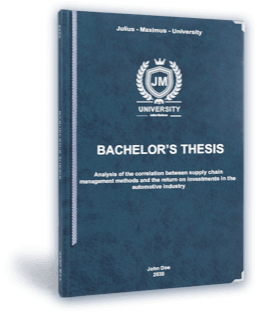
The field of statistics is divided into three parts: descriptive, inferential, and exploratory. Together, they build the base for any statistical analyses and science itself. While descriptive statistics merely state the results of the experiment, the inferential kind takes it further into analysing and working with the data. The following article will explain the intricacies of inferential statistics and how to use them with examples.
Definition: Inferential statistics
As the name suggests, inferential statistics draw conclusions of sample data for the entire population. Therefore, several statistical methods can be used, such as hypothesis testing or regression analysis.
Sampling
In order to even be able to draw conclusions about an entire population from a sample, it has to be sampled correctly to avoid any research bias. There are numerous sampling methods, each with their advantages and disadvantages, as the following short comparison will show.
Simple random sampling
In simple random sampling, the researcher picks the desired number of individuals from a population completely randomized.
✅ Equal chance to be chosen for every person
❌ Chances of choosing non-representative individuals
Systematic sampling
In systematic sampling, the researcher picks every nth individual from a population, which is listed.
✅ Evenly distributed sample
❌ Impossible without a full list of the population
Cluster sampling
In cluster sampling, the population is divided into heterogenous subgroups (clusters), which each form one sample.
✅ More than one potential sample, in case control groups are needed
❌ Representative samples are not guaranteed
Stratified sampling
In stratified sampling, the population is divided into homogenous subgroups (strata), from which a certain number of participants is randomly sampled.
✅ Representative sample of the entire population
❌ Extensive work to form the strata
Multistage sampling
The procedure of multistage sampling follows cluster or stratified sampling with more stages in between, forming clusters and sampling from those to form smaller clusters.
✅ Sizing down samples while keeping them representative
❌ more effort in sampling and higher risk of introducing sampling bias
Non-probability sampling
There are several non-probability sampling techniques, where the researcher selects participants to fit the overall population without randomization.
✅ Possibly more representative sample
❌ High risk of introducing research bias
Descriptive, inferential, and exploratory
The three main fields in statistics are descriptive, inferential, and exploratory. Descriptive statistics merely state the findings of a study, such as the number of patients showing certain symptoms or the average age of cat owners. The most used measuring tools are the measures of central tendency, such as the nasty, the mode, and the median, among others.
Inferential statistics take these results and test their applicability to the larger population. To achieve this, some favoured methods are hypothesis testing and regression analyses.
The three main fields in statistics are descriptive, inferential, and exploratory. Descriptive statistics merely state the findings of a study, such as the number of patients showing certain symptoms or the average age of cat owners. The most used measuring tools are the measures of central tendency, such as the nasty, the mode, and the median, among others.
Inferential statistics take these results and test their applicability to the larger population. To achieve this, some favoured methods are hypothesis testing and regression analyses.
Lastly, exploratory statistics, or exploratory research, dives even deeper into the data, analysing relationships between variables and exploring new fields of research. There are no standardized methods, as this is unique to the individual field of science and the goal of the studies.
- ✓ 3D live preview of your individual configuration
- ✓ Free express delivery for every single purchase
- ✓ Top-notch bindings with customised embossing

Methods
The two main methods of inferential statistics are hypothesis testing and regression analyses, but correlation tests can also be suitable in certain cases.
Hypothesis testing is the most favoured method, involving a null and alternative hypothesis, which are either proven possible or not. The following table shows possible tests to run in the process.
| Comparison test | Parametric | What’s being compared? | Samples |
| T-test | ✔ | Means | 2 samples |
| ANOVA | ✔ | Means | 3+ samples |
| Mood’s median | ✘ | Medians | 2+ samples |
| Wilcoxon signed-rank | ✘ | Distributions | 2 samples |
| Wilcoxon rank-sum (Mann-Whitney U) | ✘ | Sums of rankings | 2 samples |
| Kruskal-Wallis H | ✘ | Mean rankings | 3+ samples |
A helpful tool in determining whether the result is reasonable can also be confidence intervals, which estimate the range in which the actual value of the population falls.
Regression analyses focus on the relation between variables. They calculate how much one variable presumably changes when another variable is changed actively.
| Regression test | Predictor | Outcome |
| Simple linear regression | 1 interval/ratio variable | 1 interval/ratio variable |
| Multiple linear regression | 2+ interval/ratio variable(s) | 1 interval/ratio variable |
| Logistic regression | 1+ any variable(s) | 1 binary variable |
| Nominal regression | 1+ any variable(s) | 1 nominal variable |
| Ordinal regression | 1+ any variable(s) | 1 ordinal variable |
Correlation tests determine to what extent two variables are related and influence each other. In contrast to the regression analysis, correlation tests inspect more than one variable.
| Correlation test | Parametric? | Variables |
| Pearson correlation coefficient | ✔ | Interval/ratio variables |
| Spearman’s r | ✘ | Ordinal/interval/ratio variables |
| Chi square test of independence | ✘ | Nominal/ordinal variables |
FAQs
It’s the difference between a population parameter and a sample statistic.
Inferential statistics are those, who analyse data from samples and prove the applicability to the entire population. Common methods to do so are hypothesis testing or regression analyses.
There are three types of inferential statistics: hypothesis tests, regression analyses, and correlation tests, each suitable for different goals in the study. Confidence intervals can furthermore narrow down the range in which the population value is located.
Descriptive statistics merely state the findings of a study in numbers, without further analysing or interpreting those. This, however, is the field of inferential statistics, where the numbers are evaluated and put into comparison with each other.
- ✓ 3D live preview of your individual configuration
- ✓ Free express delivery for every single purchase
- ✓ Top-notch bindings with customised embossing
